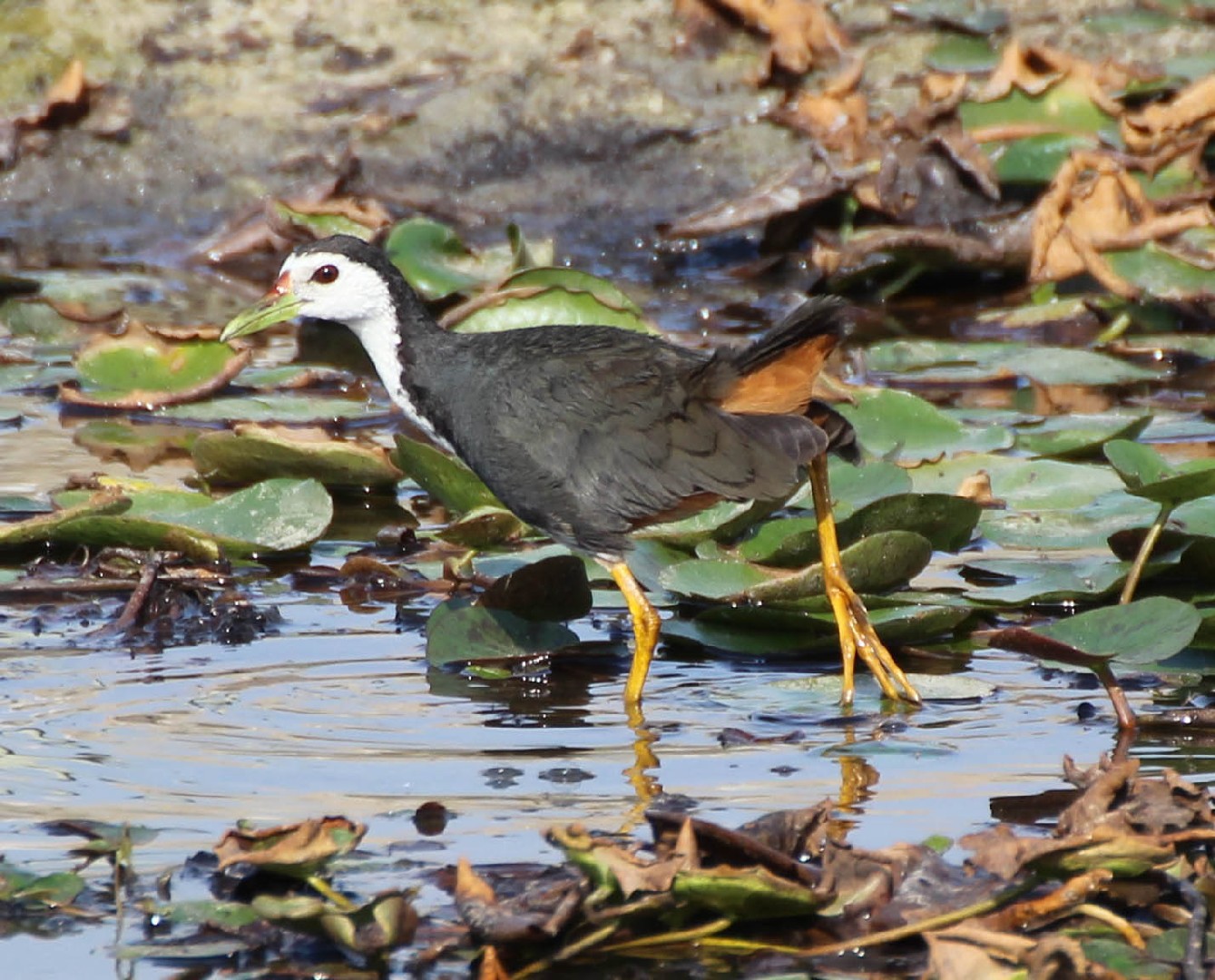White-breasted Waterhen
A species of Bush-hens and Waterhens Scientific name : Amaurornis phoenicurus Genus : Bush-hens and Waterhens
White-breasted Waterhen, A species of Bush-hens and Waterhens
Botanical name: Amaurornis phoenicurus
Genus: Bush-hens and Waterhens
Content
Description People often ask General Info
 Photo By Jyothish Nelson , used under CC-BY-SA-3.0 /Cropped and compressed from original
Photo By Jyothish Nelson , used under CC-BY-SA-3.0 /Cropped and compressed from original Description
Adult white-breasted waterhens have mainly dark grey upperparts and flanks, and a white face, neck and breast. The lower belly and undertail are cinnamon coloured. The body is flattened laterally to allow easier passage through the reeds or undergrowth. They have long toes, a short tail and a yellow bill and legs. Sexes are similar but females measure slightly smaller. Immature birds are much duller versions of the adults. The downy chicks are black, as with all rails. 
Size
33 cm
Nest Placement
Ground
Feeding Habits
White-breasted Waterhen forages primarily on insects, worms, and spiders, supplemented by grass seeds, roots, and marsh plant shoots. It employs a mix of hunting and scavenging, often at dawn or dusk, and has adapted to thrive in wetland ecosystems.
Habitat
White-breasted Waterhen's habitat spans across wetland ecosystems, encompassing marshes, swamps, tall grasslands, and dense vegetation like bamboo thickets and reedy areas. They adapt to diverse wet environments, including agricultural fields, such as rice paddies and sewage ponds, to natural water bodies like riverbanks and mangrove swamps. White-breasted Waterhen often resides near human habitats, favoring gardens, parks, and can adapt up to altitudes of 2000 meters.
Dite type
Omnivorous
People often ask
General Info
Feeding Habits
Bird food type
Bird Feeder Type

Platform
Behavior
These birds are usually seen singly or in pairs as they forage slowly along the edge of a waterbody mainly on the ground but sometimes clambering up low vegetation. The tail is held up and jerked as they walk. The nesting season is mainly June to October but varies locally. They nest in a dry location on the ground in marsh vegetation, laying 6-7 eggs. Courtship involves bowing, billing and nibbling. The eggs hatch in about 19 days. Both sexes incubate the eggs and take care of the chicks. Chicks often dive underwater to escape predation. 
Distribution Area
Their breeding habitat is marshes across tropical Asia from Pakistan east to Indonesia. 
Species Status
Not globally threatened.
Scientific Classification
Phylum
Chordates Class
Birds Family
Rails Genus
Bush-hens and Waterhens Species
White-breasted Waterhen